“Apocalyptic.”
See the scale of Pakistan’s flooding in maps, photos and videos
Maxar Technologies released satellite images of the city of Rojhan, in the state of Punjab, before and during the floods that showed entire communities cut off.
As Pakistan grapples with the loss of housing and farmlands as well as the risk of disease, many fear the country’s humanitarian disaster is only beginning.
190 percent more rainfall than normal
Exceptional rainfall began across Pakistan in June after months of historic heat waves and little precipitation.
The ground was dry and loose from record heat, causing landslides across the country. Melting glaciers triggered floods.
Rainfall picked up even more as monsoon season began in July, which became the wettest on record since 1961, according to the Pakistan Meteorological Department.
Pakistan has had eight rounds of widespread rain this monsoon season, about double the normal amount. The country has experienced 190 percent more rainfall than average from the beginning of June to the end of August. As the Indus River swelled from the steady precipitation and glaciers melted, low-lying areas were devastated.
The last two weeks brought even more rainfall to Pakistan’s southern region.
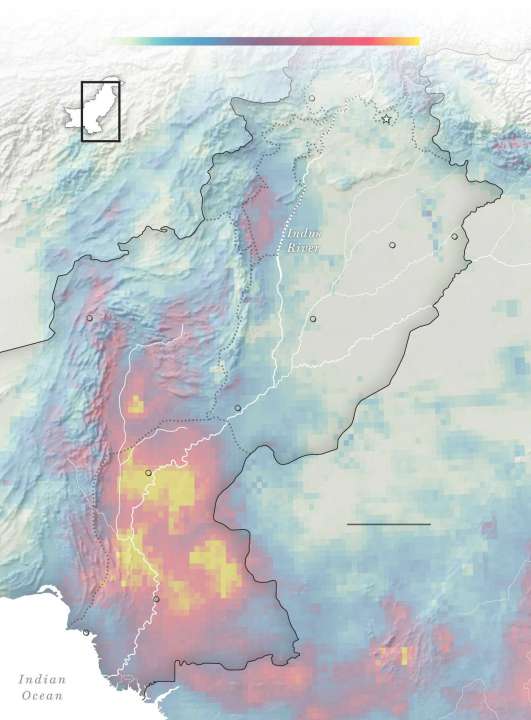
Estimated 15-day rainfall
In inches Aug. 12-26
AFGHANISTAN
Faisalabad
BALUCHISTAN
Source: NASA Global Precipitation
Measurement Mission
THE WASHINGTON POST
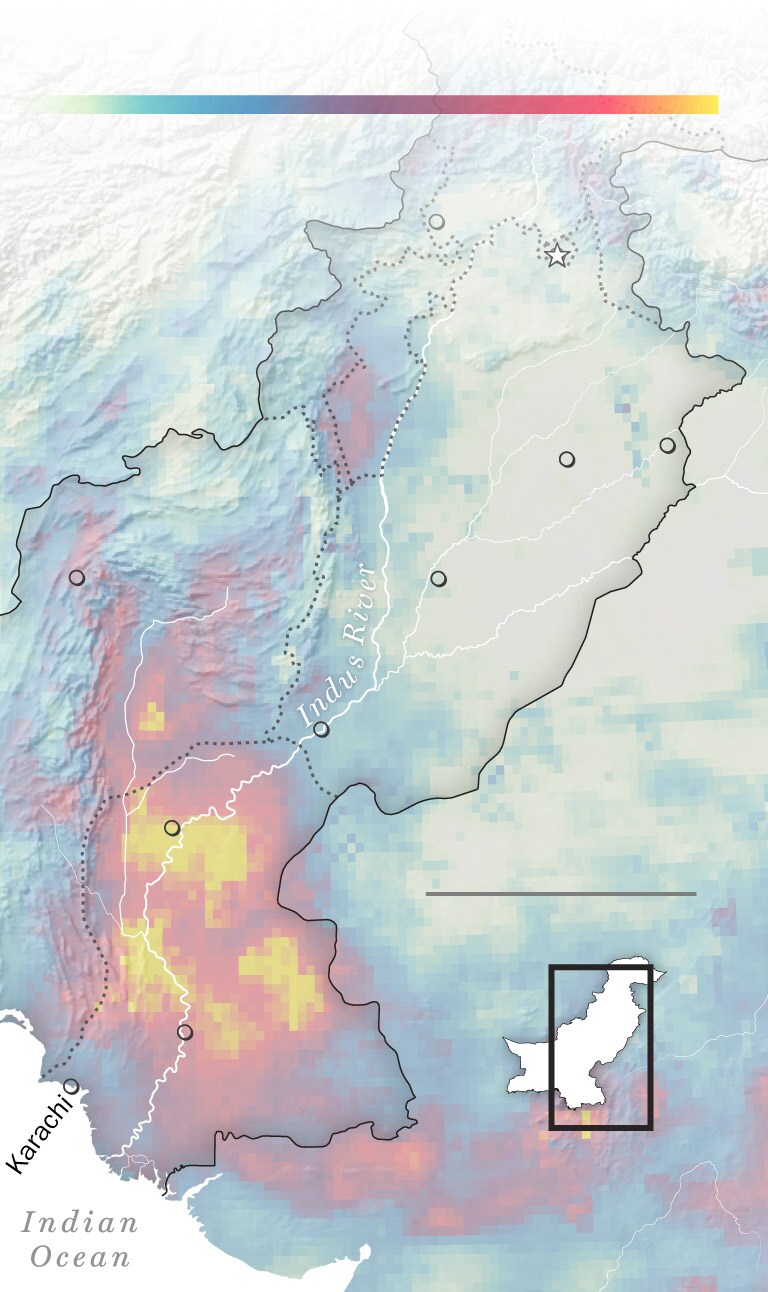
Estimated 15-day rainfall
In inches Aug. 12-26
Faisalabad
BALUCHISTAN
Source: NASA Global Precipitation
Measurement Mission
THE WASHINGTON POST
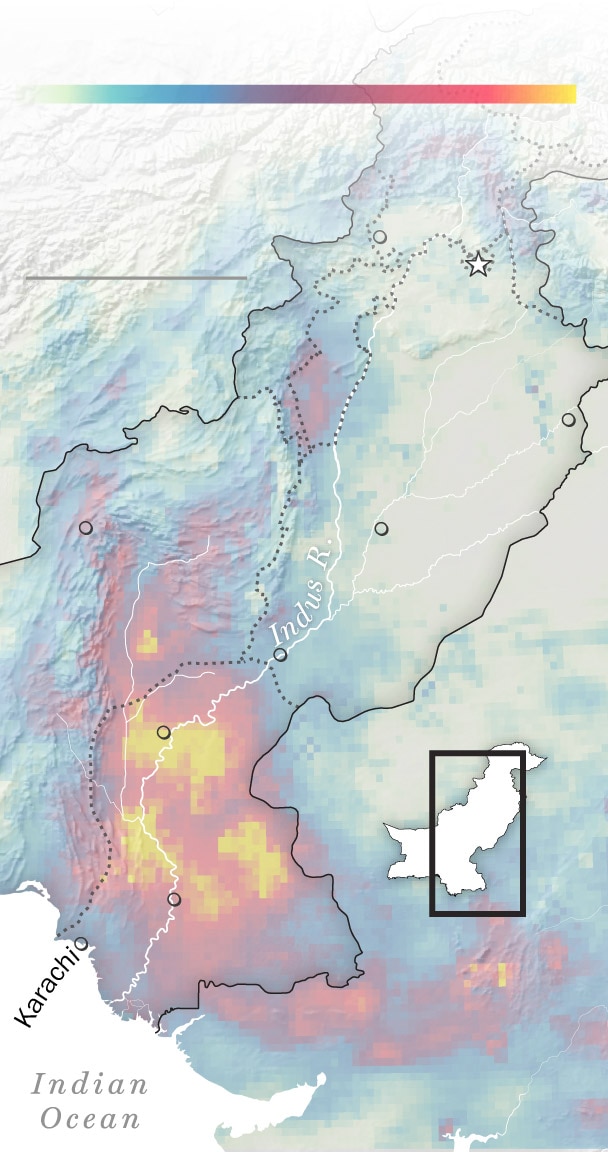
Estimated 15-day rainfall
In inches Aug. 12-26
BALUCHISTAN
Source: NASA
Global Precipitation
Measurement Mission
THE WASHINGTON POST
Satellite imagery from Aug. 28 to Aug. 30 showed visible areas of flooding.
The provinces of Baluchistan and Sindh saw rainfall of 410 percent and 466 percent above average, respectively, from early June to Aug. 29. The ensuing floods have ravaged towns and upended lives.

AFGHANISTAN
Indus
River
Faisalabad
BALUCHISTAN
Pakistan flooding detected from
satellite imagery on Aug. 28 and 30.
Source: NASA Terra/MODIS, Facebook
and Columbia University-CIESIN
THE WASHINGTON POST
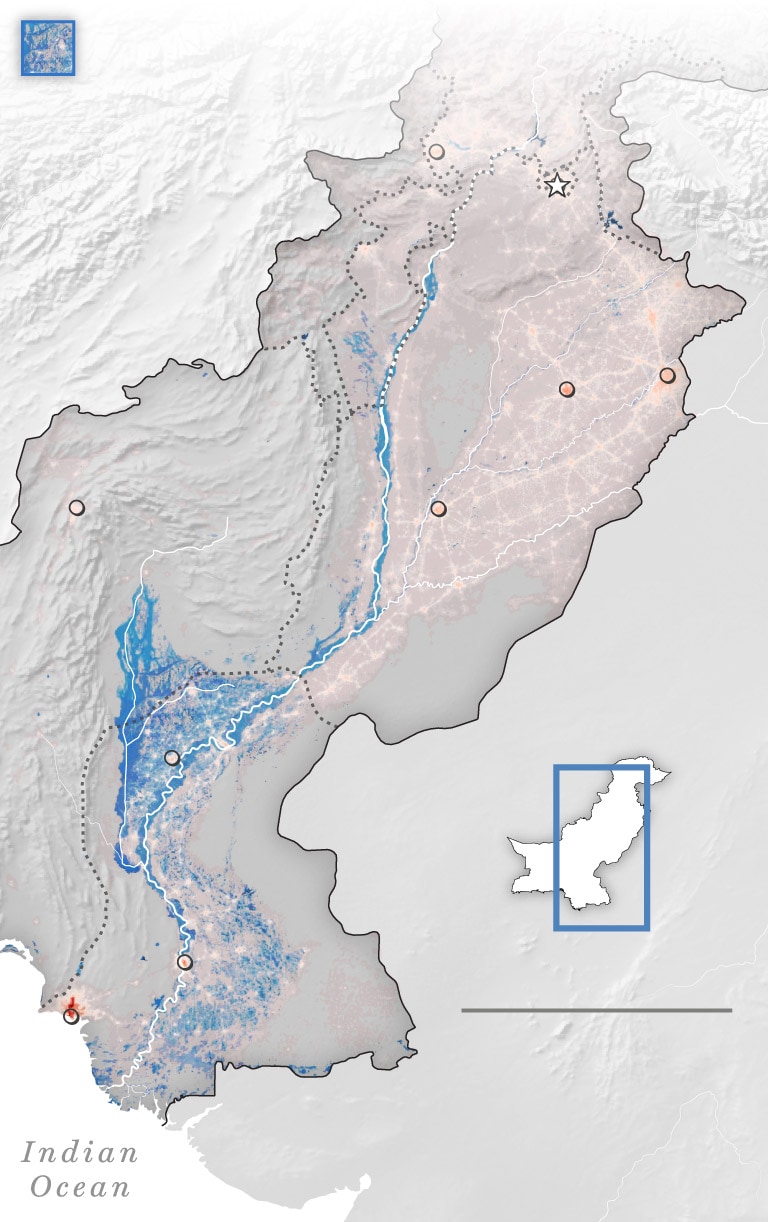
Pakistan flooding detected from satellite
imagery on Aug. 28 and 30.
Indus
River
Faisalabad
BALUCHISTAN
Pakistan
population
density
shown
Source: NASA Terra/MODIS, Facebook
and Columbia University-CIESIN
THE WASHINGTON POST
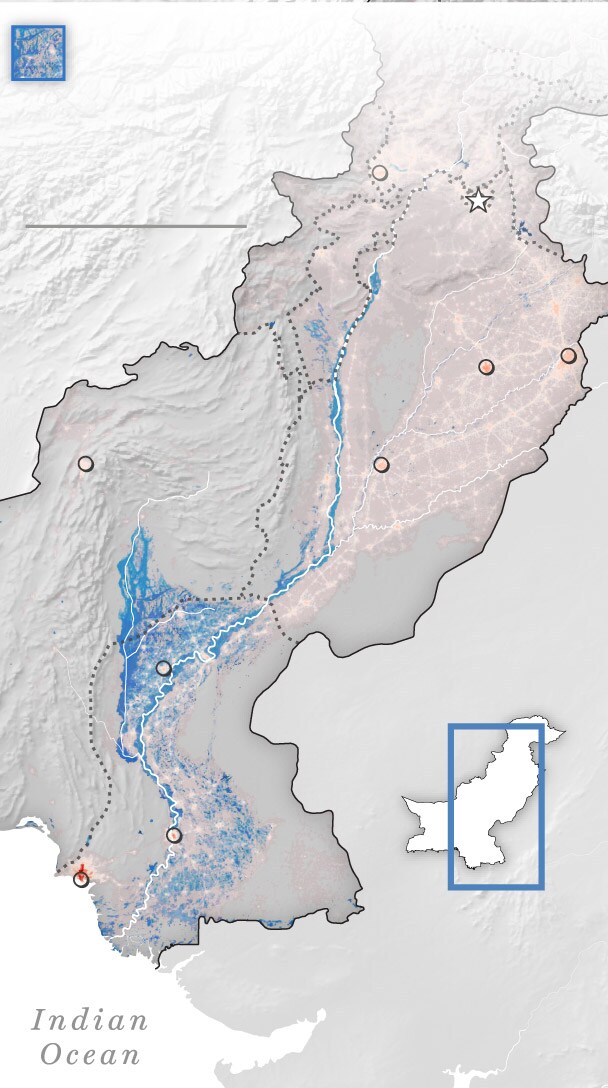
Pakistan flooding detected from
satellite imagery on Aug. 28 and 30
Indus
River
Faisalabad
BALUCHISTAN
Pakistan
population
density
shown
Source: NASA Terra/MODIS,
Facebook and Columbia
University-CIESIN
THE WASHINGTON POST
“Rains have been going on in my village for the last two months,” said Zahid Ali Jalalani, a 35-year-old farmer in Khairpur district, Sindh, who spoke to The Washington Post by phone. After a canal burst last week, his village flooded overnight, with water levels rising to 10 feet in some areas. Across the south, families waded through high water in search of dry land.
“It was the most terrible night of my life,” he said. “My house is well built, but at one time it seemed as if the walls were shaking.”
More than 1,160 people dead
The extreme flooding has killed more than 1,160 people, many of them children, according to the Pakistani government.
Jalalani emerged from his home to the sound of cries for help, he recalled. He said he spent more than six hours saving people who were trapped by the water, which had risen past their shoulders. He knew one man who drowned.
“He was under a pile of rubble, and we couldn’t pull him out,” Jalalani said. “It was so dark.”
Hundreds of people from his village are in a makeshift camp, while there are nearly 500,000 people in displacement camps across the country.
Thousands more who have fled their homes in Sindh are still struggling to find care. Many walked for days in search of shelter and set up tents along the province’s main highway. Others have moved into abandoned buildings.
At a high school in the city of Jamshoro, hundreds of people crowded into classrooms and the surrounding gardens. Most had nothing but the clothes they fled in.
Ghulam Qadir, 17, escaped his village two weeks ago. He and five of his family members have been sleeping in a classroom for over a week.
“We left our home when the water reached to almost my neck,” Qadir said. His house had begun to collapse. Two rooms caved in, and another was starting to crumble. “I was worried about my family, especially the children,” he said.
The government estimates that 33 million people have been affected by the floods, about 13 percent of the population.
The World Health Organization said Wednesday that 888 health facilities have been damaged, even as experts warned that the disaster could lead to an increase in disease and malnutrition. Standing water can act as breeding sites for mosquitoes that carry dengue fever and malaria.
Vector-borne disease researcher Erum Khan said dengue cases have already increased since the flooding. Her lab in Aga Khan University in Karachi reported more than 200 cases in August, compared with fewer than 30 in April. “Actual numbers are likely much higher,” Khan added.
$10 billion to rebuild
The destruction has left parts of the country unable to function. Officials said Tuesday that 1 million houses have been destroyed, as well as 2,100 miles of road — about the distance between D.C. and Salt Lake City. Bridges and dams were also ruined. Pakistani Planning Minister Ahsan Iqbal said Monday that more than $10 billion was needed to rebuild.
Thousands of acres of farmland are underwater, and aid workers are struggling to reach isolated communities.
“What lies ahead is food shortages affecting villages and cities alike,” Khan said.
Sindh’s agricultural economy “has totally collapsed,” Iqbal said at a news conference Tuesday. “Almost half of our cotton crop is destroyed,” he said. Rice has also been damaged, and 700,000 livestock have been lost across the country. He called the flooding a “climate disaster” and said Pakistan, one of the world’s lowest emitters of carbon dioxide per capita, was suffering the heaviest consequences of climate change.
“Someone is paying the price in the developing world,” Iqbal said.
Ruby Mellen, Kasha Patel and Laris Karklis reported from Washington. Susannah George reported from Kabul. Haq Nawaz Khan reported from Jamshoro, Pakistan. Shaiq Hussain reported from Islamabad. Gerry Shih reported from Delhi.






